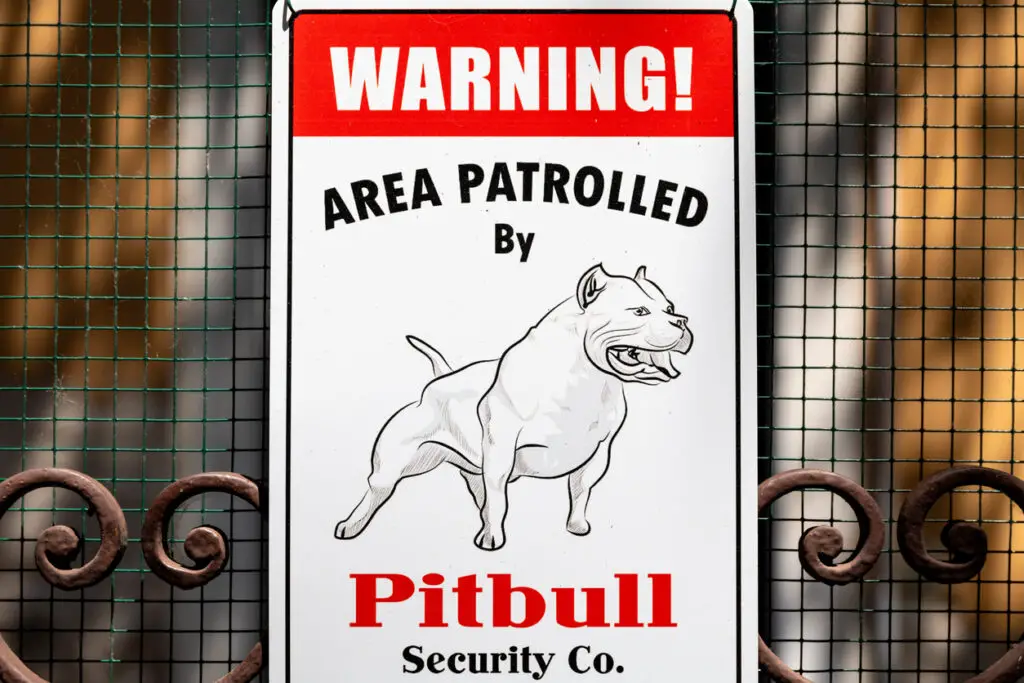1. Mandatory Microchipping Becomes the Norm

One of the biggest changes in pet ownership regulations over the last few years is the growing trend of mandatory microchipping. As of now, many states, including California, New York, and parts of Texas, have passed laws requiring that dogs (and, in some cases, cats) be microchipped before they can be adopted or sold. The microchip is a small device, typically the size of a grain of rice, that is implanted just beneath the skin of the pet. According to Pet-ID Microchips, when scanned, it provides identification data linked to the pet’s owner, which makes it far easier to track lost animals and reunite them with their families.
However, the implementation of these laws goes beyond just the initial microchipping process. If you’ve already microchipped your pet, it’s crucial to ensure that the information in the microchip registry is always up-to-date—especially if you’ve moved or changed phone numbers. Failure to update the information can make it incredibly difficult for animal shelters or authorities to contact you if your pet goes missing. Additionally, in some areas, pet owners who fail to microchip their pets face steep fines. As a result, pet owners are encouraged to make the microchipping process part of their regular veterinary care to avoid any potential complications in the future.
2. Breed-Specific Bans Are Expanding

Across the United States, breed-specific legislation (BSL) has become increasingly common, especially in urban areas. Certain breeds, most notably Pit Bulls, Rottweilers, and Dobermans, are often banned or restricted due to their perceived aggressive tendencies, despite the fact that aggression in dogs is more often a result of poor training and treatment than genetics according to ASPCA. In recent years, many municipalities have passed or enforced breed-specific bans, prohibiting the ownership, sale, or breeding of these animals altogether.
For pet owners, this means that adopting or owning certain breeds may become increasingly difficult, as many local shelters and adoption agencies are being forced to rehome banned breeds. Furthermore, some areas have introduced mandatory insurance requirements for owners of these dogs, even in cases where the breed is not explicitly banned. For example, homeowners insurance policies now often include clauses that limit coverage for certain breeds. If you live in an area that enforces breed bans, it’s vital to check local regulations before getting a new pet to avoid legal complications. These laws have sparked significant debate, with many animal welfare groups arguing that behavioral training should be emphasized over banning breeds altogether.
3. Stricter Leash Laws in Public Spaces

For pet owners who love taking their dogs to the park, it’s time to be more cautious. Many cities have started tightening leash laws, with some imposing stricter leash length requirements and even banning off-leash dog parks in some areas. The rationale for these changes is simple: public safety. According to Safer America, the risks of unleashed pets causing accidents, such as traffic collisions or attacking other animals or people, have prompted many local governments to rethink how they manage animals in public spaces.
In some places, these new laws go as far as requiring that dogs must be on a leash no longer than six feet in all public areas, while retractable leashes are increasingly being banned in certain spaces, particularly in crowded parks or areas with heavy pedestrian traffic. Additionally, some places are now enforcing fines for violations, which can range from $50 to $500, depending on how egregious the offense is. If you like to let your dog roam free, make sure to research your local laws to avoid receiving a citation. Being well-prepared with a reliable leash and harness is becoming more important than ever.
4. Outdoor Dogs Face New Housing Requirements

The welfare of outdoor pets has gained significant attention in recent years, leading to new regulations to ensure that pets who live outdoors have adequate shelter and protection. States like Texas and Florida now have laws that require outdoor dogs to be provided with proper insulation, access to fresh water, and a safe, weatherproof shelter. According to SPCA, in particular, leaving a pet outside in extreme temperatures without adequate protection is now classified as animal neglect, subjecting the pet owner to possible fines or, in severe cases, criminal charges.
As part of these new regulations, tethering and chaining of pets for long periods is also becoming illegal in many states, as it’s seen as inhumane treatment. Dogs left alone on chains are more likely to suffer from severe distress, develop behavioral issues, and even injure themselves. If you have an outdoor dog, you should check to see if your state or local area has passed regulations regarding shelter standards or tethering. Failure to comply with these regulations could result in losing your pet, facing penalties, or being ordered to build a new, approved shelter for your animal.
5. Exotic Pet Ownership Is Being Outlawed in More States

Exotic pet ownership has always been a controversial topic, and many states are now tightening restrictions on the types of animals that can legally be owned as pets. Recently, states like New York, California, and parts of Florida have passed laws banning or severely restricting the ownership of exotic pets such as big cats, primates, and venomous reptiles. According to Born Free USA, these laws stem from concerns about public safety as well as the well-being of the animals themselves. Many exotic pets require specialized care, and it’s not uncommon for owners to inadvertently put their animals or themselves in dangerous situations.
In some cases, these laws also apply to the breeding and selling of exotic pets, effectively shutting down the trade of these animals in many parts of the country. If you currently own an exotic pet, it’s important to keep up with the latest regulations, as new laws can sometimes result in animals being confiscated from their owners. Licensing requirements are also becoming more stringent, and in some areas, even exotic pet owners may need to provide proof of proper care facilities for their pets to avoid penalties.
6. Pet Travel Regulations Are Tightening

Traveling with pets has always been a hassle, but recent regulations are making it even more complicated and expensive. When flying internationally with a pet, many countries now require extensive documentation—including a valid rabies vaccination certificate, a health certificate, and sometimes a quarantine period upon arrival. Countries such as Australia, Japan, and the European Union have strict rules about which pets can enter the country and under what conditions. According to Pet Traveller, some countries have outright banned certain species from entering, while others have extended the quarantine periods for pets coming from regions with disease outbreaks.
Even domestically, air travel with pets is becoming more challenging. Airlines are placing new restrictions on pet travel, including weight limits for pets traveling in-cabin and new health and safety requirements for pets traveling as cargo. More airlines are also scrutinizing emotional support animal claims, requiring pet owners to submit documentation from a licensed mental health professional proving the need for an emotional support pet. As a result, if you plan to travel with your pet, it’s essential to begin your planning months in advance to ensure all necessary paperwork is in order.
7. Animal Cruelty Laws Are Expanding

In recent years, animal cruelty laws have seen significant overhauls and expansions, aimed at offering greater protection to animals in a range of situations. Laws in several states are now designating animal cruelty as a felony, with longer sentences and heavier fines for anyone found guilty of intentionally harming or neglecting an animal. According to the Animal Legal Defense Fund, states like California and New York have started passing laws that make the treatment of animals even more tightly regulated, including the treatment of farm animals, pets, and even wildlife.
These laws are also extending to situations like pet hoarding, where a person keeps an excessive number of animals in poor conditions. Authorities are now empowered to intervene more easily in hoarding cases, seizing animals from owners who fail to provide adequate care or who have an unsanitary environment. Additionally, certain breeding practices are coming under stricter scrutiny. Puppy mills, for instance, which are notorious for poor living conditions and inhumane breeding methods, are now subject to higher standards of inspection and more frequent enforcement of penalties. Animal advocates argue that these measures help prevent suffering and promote better treatment of animals by raising awareness of the ethical responsibilities of pet ownership.
8. Pet Insurance Coverage Expanding (But So Are Costs)

As the costs of veterinary care continue to rise, pet insurance is becoming more essential for many pet owners. In response, pet insurance regulations are evolving, offering more comprehensive coverage for a wider range of treatments, including chronic conditions, alternative therapies (like acupuncture), and even preventative care. Pet owners are now able to purchase plans that cover things like dental care, vaccinations, and wellness checks, which were not included in most plans before. The goal is to ensure pets are receiving holistic care while making it easier for owners to afford unexpected medical expenses.
However, the expansion of coverage has also led to an increase in premiums. Many pet owners are now seeing higher rates as the demand for insurance grows, particularly for older pets or those with pre-existing conditions. Additionally, some states are introducing caps on the premium hikes for older pets to ensure they’re not priced out of coverage. Alongside the increase in coverage, transparency regulations have been introduced that require insurance companies to clearly outline what’s covered in a policy and to help pet owners understand exclusions. While the rise in premiums can be frustrating, pet insurance is still considered one of the best ways to manage the cost of medical bills in the long term.
9. Pet Grooming Regulations Tighten

The pet grooming industry is under more scrutiny than ever, as safety standards and animal welfare concerns come to the forefront. Many states are now introducing regulations that require pet groomers to be licensed, undergo formal training, and follow specific guidelines to ensure that pets are treated humanely and safely. Groomers are required to handle pets with care, especially when dealing with aggressive animals or those with special medical needs. This regulation aims to prevent cases of pet injuries that sometimes occur during grooming sessions, including cuts, burns, and stress-induced health issues.
Additionally, laws are now cracking down on dangerous grooming practices, like declawing cats or shaving certain breeds of dogs too aggressively. Some states have even implemented restrictions on chemical treatments, such as dyes and hair relaxers, which may be harmful to pets. This increased regulation is intended to protect animals and ensure that pets are being treated with dignity during their grooming appointments. Pet owners should research grooming businesses and ask for proof of training or certifications before scheduling appointments to make sure they are in compliance with state regulations.
10. Mandatory Pet Vaccinations

While vaccinating your pet has always been recommended, new regulations are now making certain vaccinations mandatory in an increasing number of states. For example, pets must now be vaccinated against diseases such as rabies, parvovirus, and distemper before they can be registered, travel, or enter public spaces like parks or boarding facilities. The idea behind these regulations is to limit the spread of preventable diseases and to reduce the incidence of outbreaks that can harm both pets and people.
These laws are becoming especially relevant in urban areas, where pets are more likely to come into contact with other animals. Some states are also requiring pet owners to provide proof of vaccination before adopting or buying pets from shelters. Moreover, authorities in some areas are considering implementing vaccine passports for pets, similar to human health records, to make it easier to track vaccination status. Pet owners must stay informed about the vaccinations required by their local regulations to avoid penalties or complications when traveling or boarding their pets.
11. Pet-Friendly Housing Rules Tighten

For pet owners, finding suitable pet-friendly housing has always been a challenge. But recent regulations are making it a little easier. Some states have introduced laws that prohibit landlords from denying rental applications solely because the applicant owns a pet, as long as the pet meets certain criteria. This is a major win for renters who may otherwise have faced discrimination for owning pets. However, the flip side is that landlords are now allowed to impose additional fees or pet deposits and are also more likely to restrict the number and size of pets allowed on the premises.
At the same time, some cities and states have introduced tax incentives to encourage landlords to create more pet-friendly housing options. In areas where these regulations have been implemented, tenants often find that they need to provide documentation on the pet’s vaccination history, spaying/neutering status, and sometimes even behavioral assessments to prove their pets are well-behaved. Despite these challenges, pet owners are increasingly finding themselves with more legal protections to ensure they can keep their pets in their homes.
12. Stricter Rules on Pet Food Labeling

As more and more people become concerned about their pets’ health, new pet food labeling laws are making it easier for consumers to make informed decisions about what they feed their animals. Regulations are now requiring pet food companies to include detailed ingredient lists, including whether the food contains GMOs (genetically modified organisms), artificial preservatives, or potential allergens. These changes are intended to provide pet owners with better transparency and to help them make healthier, more educated decisions for their pets.
In addition, the use of terms like “natural,” “organic,” and “grain-free” is now more tightly regulated, with many states requiring companies to provide third-party certification if they claim such qualities about their products. This regulation helps prevent misleading marketing and ensures that pet food labels accurately reflect the contents of the product. For pet owners, this means that safeguards are in place to avoid unhealthy additives or controversial ingredients in pet foods. If you’re someone who wants to feed your pet the best possible diet, these new rules will make it much easier to make decisions about what goes into your pet’s food.
13. Pet Behavior Regulation Laws

As pets become more integrated into society, laws regulating pet behavior are becoming more common. Noise ordinances are now a frequent concern in urban areas, especially for dog owners whose pets may bark excessively or cause disturbances. Many cities have introduced limits on noise levels from pets and now impose fines for nuisance behavior like constant barking, howling, or yowling. These regulations aim to maintain peaceful living environments and to prevent the disruption of public spaces. For pet owners, this means you must be aware of how your pet interacts with the community to avoid penalties or even eviction.
On the flip side, some cities have also introduced laws that require pet owners of aggressive dogs to take behavioral training classes or face fines. This ensures that owners of more difficult pets work on the behavioral training needed to reduce the risk of attacks and improve socialization with other animals. It’s a win-win: safer neighborhoods for residents and a better quality of life for pets.
14. Pets and Taxes: New Tax Benefits and Deductions

In what’s becoming an increasingly pet-focused society, there are now some tax benefits available for pet owners. While pet care has traditionally been considered a personal expense, a number of states are now offering tax breaks for pet-related expenses, including medical bills, pet insurance premiums, and vet visits. This is particularly true for owners of emotional support animals or pets with significant medical needs, as their care may qualify for medical deductions. Some pet owners are now able to deduct the costs of chronic condition treatments or specialized diets.
Additionally, certain pet-related services, such as boarding or pet-sitting, may also be tax-deductible if they are necessary for the owner’s work or health. These new deductions make it easier to manage the often expensive costs of keeping a pet and also help recognize the role pets play in people’s lives, particularly in emotional support or service roles.


